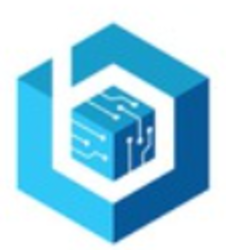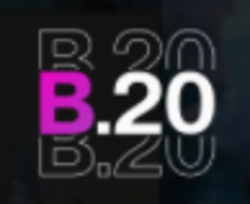As with any technology, cryptocurrency is absolutely jam-packed full of complicated terms including clever acronyms and sometimes secret slang terminology, find below a list of these common and not-so-common terms with references that will be periodically updated to help you on your cryptocurrency journey:
2FA
Two-factor authentication adds a second layer to your (username and password) login credentials, it is highly advised to enable this option with any financial or data that needs protecting with remote logins to websites, sometimes referred to as OTP (One Time Passkey).
51% (attack)
There are many sorts of exploits, hack and attacks that can be experienced for owners of Cryptocurrency from personal wallets to big exchanges being drained. One attack is where the power of the network is overtaken with more hashes that can be equally accepted by it or distributed on it, it is possible this way to overtake and steer the blockchain, even injecting fake transaction, stakes or masternode rewards. This is one one the reasons why blockchain networks are decentralized.
Address
Any store of value, data or set of tokenised records need a unique and secure allocated space on a blockchain. Sometimes referred to as an account for the same purpose. Each address or account should be treated as a separate store of value and should be backed up accordingly, either by having a secure copy of the mail wallet.dat or preferably the public AND private keys backed up and stored, in a secure space.
Airdrop
Free cryptocurrencies and assets are given away, there is normally some sort of organised policy for their distribution, occasionally markets and exchanges will give away newly listed coins to gain interest in the project.
Algorithm
All cryptocurrency networks run on an algorithm particular to it but others can utilise a similar standard or have a custom or new algorithm entirely depending on the blockchain and network requirements. Think of the algorithm like a language that’s dialect can be understood with the other required components that make up the entire protocol and overall agreed consensus.
Altcoin
Any cryptocurrency coin that is not Bitcoin (BTC) or one of the ‘Majors’ are considered and referred to as Altcoins (Alternative Coins). Some crypto purists refer to altcoins as ‘Shitcoins’ which is a fairly derogatory term that blankets both good and bad projects, it is however widely accepted as a term in the Cryptocurrency community.
ASIC
An ASIC (Applications Specific Integrated Circuit) machine is a specialised piece of hardware that only has one job to do, and is only actually able to do that one job. With cryptocurrency mining, ASICs are very popular for some algorithms that use it such as SCRYPT, SHA-256, X11, there are some projects that are ASIC resistant to create a fairer chance of a more concise network.
Block
All transactions and records on a blockchain are stored in blocks, each block has a height from the first (genesis) block and each block has many separate transactions that must be included within it in order to be confirmed, this is carried out by miners with their mining hardware in a race to solve the difficult mathematical equation – if a block is found, the miner wins a block reward.
A set of records about all transactions on the network taking place and in the past, it is possible to track addresses and blocks of Bitcoin as they are moved across the network with a Block explorer, not all cryptocurrency blockchain projects are totally transparent with the data such as is the banking and financial organisations operated Ripple (XRP) digital currency.
Blocktime
This is the time it takes for the block full of transactions to progress to the next block in its ever forward moving fashion. Blocktimes vary by coin design, some are super fast-moving, some are much longer, as an example BTCs block time is 10 minutes whilst IONs is 1 minute. The range in blocktimes is the time allowed to fill the particular block with transactions before it is processed (and confirmed) ready for the next block.
Bootstrap
A bootstrap for use with the blockchain is a set of records that are a local copy which is download and enables desktop and server wallets to synchronise using a bootstrap.dat file (or files and folders in a compressed format) that is copied locally to the wallets data directory (folder), upon starting of the desktop or server wallet, it will index the downloaded headers, blocks and data then synchronise remotely as normal for ongoing normal operations. Bootstraps are super handy for getting new wallets (and masternodes) online, synced up in a timely manner and are an indispensable tool for users of cryptocurrency at times.
Bot
They are everywhere in AI and predictive text, realtime mood prediction and more… bots are automated systems connected everywhere in cryptocurrencies with hint and tips helpers on websites, social chat apps like Discord, Slack, Facebook and Twitter; there is just no stopping their spread across the digital plains and just like other world elements, they can be both good like above and bad when they invade your system, capture keystrokes and keystores or just steal your unencrypted wallet.file or unencrypted private keys…
Broadcast
For any transaction including the movement of cryptocurrency coins as well as storing complicated data or messages and sending votes that are stored on the blockchain for the data to be permanently and securely saved; they must first be compiled and broadcast successfully to be accepted by the other nodes on the network. Through the act of entering a send-to address with a reference or the signing of a vote, then pressing the send button constitutes as ‘broadcasting’, just like an email you need to double or triple check the details as once sent, they cannot be retrieved and mistakes can easily happen that are costly as well as embarrassing, even if just for yourself.
Change address
Sometimes new ‘change’ addresses have to be created within internal wallet coin blocks alongside normal address in order for continual wallet operation. Change addresses are created in several ways:
Coin inputs have to be split to send a transaction but if there are no other confirmed coin spaces available within the coin blocks to be able to split into, a new address within the wallet is created for this purpose.
When Staking with PoS and a coin block with its collateral is needed to be split in order to be able to receive the reward and no other coin blocks including the originating address is available, a new change address is created.
When sending a transaction but previous outputs have not confirmed fully so that address is not available, for the transaction to be successful, a new change address is created.
CLI
Command Line Interface is for the interaction and operation of cryptocurrency wallets, mainly secured Daemon wallets that are ‘set and forget’ in nature. CLI users have to access a Terminal window and input command line by line normally on a LINUX computer or server but the commands can be entered into most QT wallets via the ‘Debug Window’ to have greater control and to bring up a vast array of details, more than the front facing user intuitive GUI can.
Cloud mining
Individuals as well as deep pocketed organisations and entirely free and able to take part in hardware mining cryptocurrency mining in order to win rewards for solving transactions blocks but it can be a complicated business.
Many choose to take part in cloud mining with remote and well maintained hardware with services like Genesis Mining who are a well established firm so go check them out.
Just like regular mining, the rewards from cloud mining can either be sold every so often for another currency or collected and compounded in a digital wallet.
Coin Halving
Depending on the project and the planned release of its coins to the general community and world, most blockchains have set block rewards for miners, every so often the block rewards reduce by a half (or thereabouts) then the next stage progresses until it halves again, this incentivizes the various forms of miners to take part allowing the network to progress due to the node support, as time goes on there are less and less rewards to go round, with this reduction the price of the latter coins should climb if a usable network, coin/token and service, if not from the particular blockchains start. If it all goes to plan then those early miners who held their block rewards, shared or not, will hopefully get some value from their efforts. #WhenMoon
Coinweight
A technical integral term mainly used on staking and masternode networks and their wallets; the more coins kept in the
wallet, and the longer online allow the operators to gain rewards. It can also refer to the internal coin blocks (addresses) and their amounts in available (confirmed) funds.
Community
Cryptocurrencies have communities that are built to not only develop and further enhance the coin but also to keep up with news and roadmap updates. Long-term nvestors have an interest in the coin as well new people just finding out about it and good cryptocurrency community will always be welcoming to these new people, as the community grow so does the coin.
Confirmation
When a cryptocurrency transaction takes place, it must be setup and broadcast correctly then allowed to spread throughout the blockchain network after being included in a block. Coins have different confirmation times and the number of confirmations can differ but are normally 6 (at most) to spend. With mining, PoS staking (including masternode rewards) and other network operations, the confirmation times and time accepted then allowed can differ greatly.
CPU
An acronym for Computer Processing Unit, the CPU is the brain of any computer-based device and allows for not only a general functioning for background tasks and processes but some of its power can be dedicated to cryptocurrency mining.
Cryptocurrency
Any digital currency that can be transacted and transferred to others with layers of security to prevent monetary loss can be considered a cryptocurrency. Most currencies are decentralized, this means they are not controlled by a central body but the overall running and governance in some cases are created by its active network users.
Daemon
One of the different wallets to not only store cryptocurrencies and their assets are Daemon instances. They normally run on server hardware either locally or on a remote VPN (Virtual Private Network). Command line in operation bt nature, the use of them can seem bewildering although the weigh up of enhanced security and operation makes their use pertinent for certain applications such as with running masternodes or store users funds on a cryptocurrency exchange.
Database
A database is a set of organized records, they can be in the form of email lists, account holdings on cryptocurrency exchanges, masternode entries on block explorers as well as for internal account within local and remote wallets. There are many forms of databases with different programming and real world uses languages but essentially, whatever their complexity – they all do the same-ish thing serving data in a categorized manner depending on the call.
Deflation
Deflation is the opposite to inflation, generally, for cryptocurrencies it refers to the total coins amount which can be capped or not. Most coins have a ‘Total coin capacity” or “coin cap” for short, this means that only a certain amount of coins will be, or already have been minted and will be available on the network.
With deflationary currencies and assets, the idea is to create scarcity in the coins and so their value will rise, one such coin was 42 coin, with only 42 ever available, deflationary coins go one step further with burning existing coins by way of fees or some other planned manner.
Deflation can even be a holder losing their coin/token private keys or a wallet.dat containing funds being corrupted – as these coins cannot be accessed anymore, they are taken out of the currencies circulation in a deflationary manner unless the keys or wallet media are found or restored from a backup.
Difficulty
When a blockchain is young the difficulty is easier for the miners to be able to solve blocks and can be displayed with a value of 0.01 then as the blocks progress the difficulty could go up to perhaps 0.10, then to 0.20 and so on, these are just examples but hopefully, you get the idea. Difficulty can also vary depending on the amount of actual miners mining, with a small amount the rewards are higher, as more and more miners come online the difficulty rises so making blocks harder and harder to solve.
AS of 24/08/2020 the network difficulty of DASH coin is 305,712,456.71, this means that if you were mining physically with PoW or with software and PoS coin weight, or that of a masternode, the chances of a reward are far less that with a lower difficulty and so your mining medium needs to have a higher difficulty in order to have a chance of solving the block – this is where mining pools come in to play.
Dust
It is best practice to use a new wallet address for every transaction for privacy but sometime this can lead to a problem if you send a certain amount and there is then left a very small amount that would cost more in transaction fees to send than it is actually worth – in this case scenario many of the owners of this ‘dust’ will not bother to send or combine with other funds and so it is just left, this act goes toward deflation of the coin/token or asset. Dust can be the result of change addresses as well as trading accounts with much the same fee problem as above.
Exchange
Traders and cryptocurrency enthusiasts alike use exchanges and markets, commonly coins/tokens and assets are Bitcoin BTC paired meaning on currency can be exchanged for another and vice versa. You don’t necessarily need to use an exchange as there are coin swaps available that make the process easy and quick but be wary to use a good trusted one.
Some mining pools operate an exchange facility if perhaps you want to mine one currency but want a different currency.
Occasionally as in the case of an algorithm change and hard fork in the blockchain it is required to do a “coin swap”, sending the old coin into a central server to get the new chains coins that are valid as the new chain will not accept the old ones, or even be possible to due to a completely different technology.
Faucet
As in the name, (cryptocurrency) faucets are small drip feed outlets of coins, tokens or assets, normally a small task is required not only to prove you are human but also to create some interaction and work to actually extract or gain the reward – there are some online faucets where tasks like surveys and ongoing verification for ‘free’ offers, you should steer clear of these and only rely on official coin outlets or faucets on recognized sites including exchanges where coins are offered as an incentive for interest in the particular project.
Farm (mining)
A couple of low power USB ASIC miners or a set of mining rigs right up to a warehouse fulls worth, they can both be considered mining farms if they are all working together in whatever capacity to extract or mint new cryptocurrency coins in a pooled (with other users) or solo mining environment.
Fee
Sending cryptocurrencies involves a little fee by default but it is possible to send a bigger initial fee or to raise it after being initially broadcast which at times is required for the transaction to be proven and confirmed by the miners with their mining equipment.
There are also fees when using exchanges, mining pools and online wallets also, but this is normal for any useful service.
Fees for transactions are ‘per byte’ whereas fees on exchanges, online wallets and mining pools are normally calculated by percentage.
Fork
There is always talk about fork so what are they?
It is possible to fork another developers code on GitHub, you can then edit and create your own forked version, if some improvements are made and agreed to, they can be pushed to the main repo (repository) or a sub-version of iut to then possibly make it into general official releases after testing, or you can just build out your own version and then take over the world!
There are two main fork versions, with blockchain technology: soft and hard.
Soft forks are designed into the code with block heigh checkpoints, when aa certain block number is passed, the code kicks in – there can be many implementations from PoW/PoS crossovers, wallet protocol updates and so on.
Hard forks are forced by the developers or those with a 51% hashpower ratio, one such forced from was with the STEEM platform and Justn Sun locking up accounts and essentially stealing the funds, hard forks are not nice and should only be used for emergency blockchain events…
Governance
Blockchains, although decentralized for the most part still need a certain steering with aid of governance, key holders of coins or assets can vote for network expansion as well as improvements, votes can be cast by these top hodlers to be then possibly be implemented by the coin developers.
GPU
Used for Intensive graphical applications like 3D, VR (Virtual Reality) CAD (Computer Aided Design and computer gaming, the GPU (Graphical Processing Unit) can be used for cryptocurrency hardware mining, many coins can be mined in this fashion using specialised software and command line input within a console.
GUI
A (GUI) Graphical User Interface refers to any non-command line operation of a wallet, computer instance or remote resource. Desktop QT wallets have an easy to use GUI but hidden out of view is a ‘Debug Window’ where commands can be entered in order to carry out both normal and advanced options, getting feedback for current operations as well as initial setup and ongoing operational configuration.
Hashrate
The amount of processing computing power across a coin network, it is referred to with mining activities using PoW and Masternode/Staking wallets with PoS. A miner could refer to their hardware achieving 40% of a particular mining pool rate or 5% of the overall network rate or simply referencing their own particular hash rate per device or as a farm working together.
HODL
The act of short and long term personal storage of cryptocurrencies is called Hodling, sometimes, for whatever reason; a coin will drop dramatically in value and its core fans and heavy investors will not want to be parted with their hard-earned holdings. At times the Hodlers will collect MOAR and MOAR of the lesser valued coin, continually losing value, they can then become known as bagholders.
ICO
An ICO (Initial Coin Offering) is a timed purchase or reservation of pre-mined coins with new cryptocurrency projects, with ICOs the earlier newly released coins are offered at the cheapest when first distribution takes place, in subsequent rounds the coins become more expensive. ICO funding which is normally bought with BTC (Bitcoin) are often cited to be used for those particular projects ongoing development costs including marketing and exchange listings.
Inflation
Many cryptocurrencies have inflation built into the blockchain in order to create incentives for users on the network with mining and long term storage of assets such with as staking and masternodes which creates new coin, when new blocks rewards are created – these are coins that count toward inflation. There are coin ‘caps’ built into most cryptocurrency coins – when the capacity is reached; no MOAR coin can be created, as such the existing coins should grow in value.
Input
Several meanings can be interpreted by the word ‘input’ in cryptocurrencies.
Entering code into a console to compile a wallet of some sort.
Running commands to mine cryptocurrencies on a terminal or command window.
Coin block inputs that can be selected with coin control when making transactions
Blockchain explorers show (coin) inputs as well as outputs for transactions.
Keylogger
Something you really do not want on your computer system or mobile phone/tablet, a keylogger does exactly what it says it does – it records all keystrokes and data input and can be delivered to infect the computer device in a number of different ways including from erroneous internet links producing a malware infection or via physical access to the computer. If your computer key inputs are recorded these can be used against you, the theft of cryptocurrencies is very easily possible if your password/passphrase is compromised so it is imperative to make sure your device with the wallet software on is not infected.
Local
Local refers to a computer instance that you are physically in touch with like a laptop, desktop, ASIC miner or even mobile phone.
Masternode
A special type of cryptocurrency wallet normally based on a PoS system, masternodes reap rewards from transactions on the network by relaying transactions, heightening security and keeping the network healthy as well as other roles like governance and voting. Normal staking wallets share the rewards, the difference is a ‘normal’ wallet for PoS relies on coin weight (amount of coins) whereas a masternode has locked collateral and for its work on the network gets random rewards, alongside other masternodes on the network.
Memo
A memo is used for STEEM and HIVE wallet (and forks thereof) identification with deposits on exchanges or online wallets as well as daemons and user GUI instances. Think of them like an address or postcode/zip code for a generalized area and then to be delivered correctly by leaving the coin input (postpersons bag) and successfully being put into the correct recipients letterbox, it is therefore very important to include a memo and of course, the correct one as technical time (possibly with a fee) that could take time and with a charge to recover the funds…
Mempool
Every transaction that is sent needs to be successfully included in a block, as block times vary it can take some time to get included in a block – in this limbo time the transactions are held in a memory pool until being included in the next block.
Mining
The process of extraction and gaining of rewards through Transaction fees as well as block rewards through solo or pooled mining efforts with complicated hardware or through Proof of Stake (PoS) just by holding collateral for an ongoing time period in a wallet to prove the transactions on the network.
Mint
Most cryptocurrencies have supply capacities which are the total amount of coins that will ever be allowed to be created and then in total supply, the creation of a new coin is called minting just like the term for regular FIAT currencies but in a safer decentralized peer-to-peer network 😉
MOAR
MOAR, MOAR, MOAR! Everyone wants more and when it comes to cryptocurrencies with mining and the actual coins – MOAR is definitely better!
Mnemonic (Seed)
Used as a wallet backup, mnemonic seeds are a series of words and are far easier to remember than a set of hexadecimal characters.
A mnemonic PRIVATE SEED BACKUP seed looks like:
goat tower potato monocle illustrious yellow fish road banter power crucible spanner clock
Whereas a hexadecimal PRIVATE KEY BACKUP backup text string looks like this:
iKiKde5bsW1kwpPtx6ymsy7cypcBRNZz45eorMopA147lgt4z0L
Both of these different public key backups are randomly and securely generated and as such should be kept safe to secure your funds from theft – never shown or given to anyone else.
Network
Encompassing all the crucial and ancillary systems and services required for a blockchain system to work from the DNS (Domain name system) to informational prompts with feedback like an API (Advanced Programming Interface) right down to Daemon and desktop wallet. Through a trust-based system, most of the automated work is provided by volunteers who take part, sometimes without knowing it.
Node
Physical internet-connected nodes are essential for any blockchain network to allow communications including governance, mining, sending, and receiving of transactions. Nodes can be simple wallets installed on desktop or flat panel display devices, Daemon setup on local or remote LINUX servers – any internet-connected wallet that serves are a relay for the network can be considered a node.
Output
As the same with Input/Output goes hand in hand:
Results on screen from an RPC (Remote Procedure Protocol) command line operation being inputted or through the installation process of a wallet or configuration.
Output coins and blocks that are being transferred to another wallet or receiving address; if a smaller amount is being sent there will be change that needs to go back to the originating wallet as well as the associated Tx fees.
Passphrase
A passphrase/password is the very same thing, it is a very important credential that is required to protect your holdings, so set a good one to prevent hacks and possible theft of your cryptocurrency assets not only with a wallet passphrase to unlock it and send funds or for staking but also with the wallet configuration file RPC (Remote Procedure Protocol) details, they need to be very secure or possible QQs will occur later!
Peer
Any mobile, desktop, or server wallet acting as a functioning component of a cryptocurrency network can be considered a peer. Not only do peers on the network allow for decentralized operation but they also secure the network and the transaction carried out within it. Peers are also essential for blockchain synchronization with initial and ongoing newly generated blocks allowing for a fast network.
Pool (mining)
It is possible to solve the blockhash by a miner PoW or PoS with a very small hashrate but as the network grows the difficulty, as well as the number of machines mining will climb, this makes solving blocks much harder (unless you have lots of computing hash power). To be able to compete with other miners on the network some will group together with their combined hash power and become part of a mining pool. Rather than competing for entire block rewards singularly, the pool of miners will share the reward fairly amongst the pool and does not matter which mining happens to solve it.
Proof of Stake is the process by which holders of cryptocurrency coins can store their funds within an electronic wallet and are then rewarded after some networking time has passed for helping to confirm transactions on the blockchain through a form of software mining using just a simple wallet. There are many PoS coins such as AREPA, ION, LCP, and WGR.
Proof of Work is the process by which miners with their specialized mining equipment take part in an ever-growing race to solve complicated mathematical problems presented by block advancement and the transactions included within that particular block. If the miner finds the correct hash, they are rewarded the block reward for the coin they are mining at the time. It is possible to solo mine or be part of a group in a mining pool, if a block is found the reward is shared equally.
Private key
For every public key (the one you offer out to receive payments) there is a private key associated with it and it is very important for the private key for every address you use or any that contain funds to be backed up securely and kept safe as if your wallet should fail or the wallet.dat file become corrupted you will lose access to your cryptocurrency and have very little chance of recovering it.
Protocol
Anyone who takes part in a cryptocurrency network must agree and abide by a certain set of rules and policies grouped together into a protocol that sets out communications and relays as well as security, anonymity, and defence against attacks, loss of funds, and even fraudulent minting of coins.
Public key
To receive payments, send funds to another person, or pay for goods and services a public key (address) is required.
A public key can be put on websites for payments as well as given out, perhaps embedded into a QR code but remember that this is vastly different from the private key associated that is unique to it.
If you give out the private key to a cryptocurrency address it becomes a fact that you no longer have entire possession of any and all funds associated with that address.
Public keys are fine to give out.
Private keys must be kept secure and should NEVER be given out or shown to anyone else.
Ransomware
some Malware (Malicious software) can get into your computer via the web, email, or physical means – it can sit dormant and undetected and then suddenly encrypts your hard drive then once completed a message comes up demanding Bitcoin (BTC) with a countdown timer; if you do not send the Bitcoin, the data of the computer is left encrypted with an unknown, possibly burned encryption key – so making decryption pretty much impossible.
Remote
Remote refers to a computer that is not physically in front of you, one that is a room or network away on the other side of the country, continent or world such as with a VPN (Virtual Private Network).
Remote computers or dedicated servers, in general, are used for masternode, vesting and witness rewards as well as daemon instances.
Reward
Rewards come in many forms in cryptocurrency, there are those from mining blocks in a solo or shared pool mode, rewards come from airdrops and faucets as well as trading, referrals and PoS (Proof of Stake) staking with simple wallets or advanced command line versions that stay online 24/7 in the form of locked coins or just coin weight and network variance, lending platforms too. Whatever the form or source of the reward, they are there to facilitate interest or incentivize users to take part in the network and its functioning, some from a belief standpoint with the longevity of the project, others for a financial gaining that sell their gains and exchange to another currency.
Satoshi
A Bitcoin is made up of Satoshis to make a whole one just like Cents and Pennies with Dollars and Pounds being rounded up, there are 100 cents in a Dollar or pound and is represented as 1.00 (two decimal points) whereas a Bitcoin is represented as 1.00000000 and the smallest denomination is 0.00000001 (one Satoshi). Satoshi Nakamoto is the originator of Bitcoin and the use of Satoshi for the separate denominations is made in “his” honour.
Seed
A seed within cryptocurrency is a link to an asset, it could be in the form of a hexadecimal set or characters varying on length and complexity, they can also be in the form of mnemonic keys that are a set of words which are easier to record with less chance of mistakes as a set of simple words are used – with these details access to wallet or account addresses with their funds are possible so they must be kept safe and secure away from prying eyes and NEVER stored anywhere online.
Sign (message)
To show ownership of an address or to leave a message within the transaction it is possible to virtually sign a message within blockchains, it costs a fee but adds to general overall security.
Staking
Proof Of Stake (PoS) coins and networks incentivise users to ‘stake’ collateral (cryptocurrencies) in a wallet to gain rewards. It is better to stake locally on a desktop wallet rather than with an online wallet or services because “If you don’t own the (private) keys you don’t (fully) own the coins”
Solo (mining)
Mining for block rewards from the Debug Console or Command Line Interface (CLI) on a Daemon instance or in a mining pool for the purpose of gaining the whole block reward with ASIC hardware can be very profitable but there is far less chance of a reward than with mining in a pool with other users to share the rewards such as with Pay Per Share (PPS) or Proportional systems.
Terminal
Stemming from computers of old where users had to login to a terminal or command window entering text commands for operation as well as data feedback, nowadays most cryptocurrency users get an experience of this through the “Debug Window” in a QT wallet or remote logging in and executing commands with SSH keys being shared and so on.
Ticker
The use of a ticker helps distinguish between different cryptocurrency coins on markets and exchanges, Bitcoins ticker is BTC, Advanced Technology Coin is ARC. There are however similarly named coins which can lead to confusion like that of LINX coin with a ticker of LINX and LYNX coin with a ticker of LINX when extending mined coins to a new wallet or cryptocurrency exchange, it is very easy to make financial losses with mistakes in tickers and coins and so you should double-check the details carefully.
TXid
Every single transaction on a blockchain network carries with it a unique txID (Transaction Identity), it should be thought of as a receipt and any TXid can be looked up with a block explorer to prove the transaction took place and the funds made it to the correct wallet or informational system implemented like voting.
Verify (message)
After a transaction has been signed, the second party must then verify the message using their computer wallet, once this process has been completed, funds are then verified in order to continue the transaction.
Wallet
To store cryptocurrency or assets a wallet is required, there are different types of these available with simple desktop QTs and command line Daemons for advanced applications as required by exchanges and commercial services or to run nodes for masternode networks, there are variants of these wallets available for smart devices like mobile phones and tablet PCs, it is also possible to generate a paper wallet that includes both the public and private keys which can be stored offline.
















































